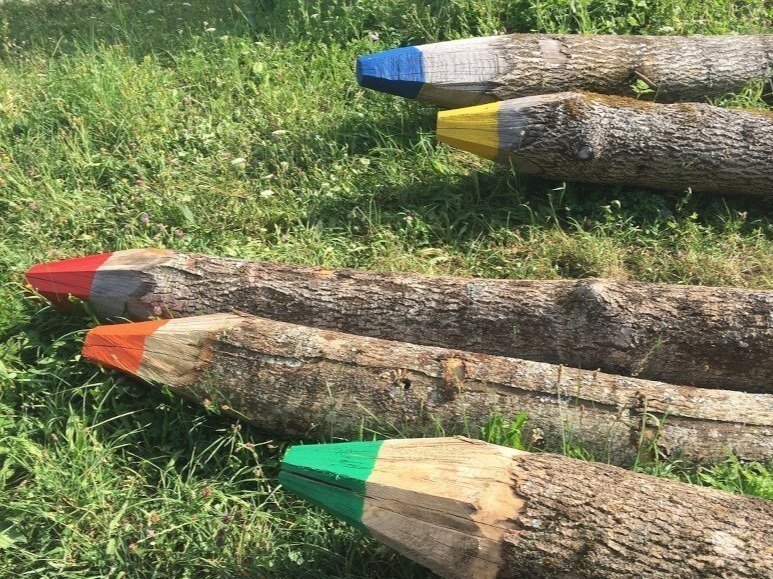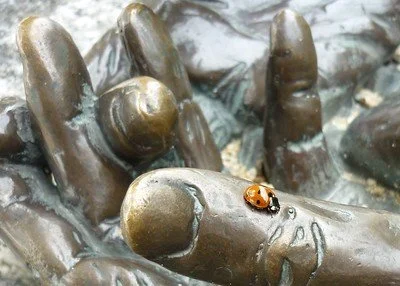
Connect in the Commons
Social connections turn spaces into places.
(Tuan, 1977)
Connect in the Commons brings people together to collectively engage in leisure activities in communal spaces. These gatherings make it easier for people who do not know each other well to connect, and they can help enliven communal spaces by making them friendlier and more social. These gatherings can stand alone or they can be integrated as a component of larger gatherings and are especially beneficial where people may feel awkward initiating conversations (e.g., conference social hours).
What is Connect in the Commons?
Engaging in leisure activities contributes to both individual and social well-being, and has even been linked to community development and democratic participation. According to Brandtner, Douglas, and Kornberger, investing in the social fabric of a place can be as important to (re)vitalizing a space as is investing in its physical properties. They explain that,
“As a supplement to physical infrastructure and services, investments in social infrastructure through welcoming, inspiring, accessible public spaces can be equally vital, supporting the social fabric of the city in order to improve participation and social cohesion among citizens.” (p. 927)
One way that leisure activities facilitate relational well-being is by making it easier to engage in conversations with people we don’t know, or don’t know well. When people feel uncomfortable talking to others, they often find it less difficult to talk when they talk while doing something else. Silences that are uncomfortable in typical conversations are expected when engaging in activities, and thus do not feel out of place. Additionally, the leisure activities themselves provide built-in topics for conversation, relieving some of the pressure of knowing what to talk about.
Meet-up, unwind, and connect with others, while enjoying a leisure activity.
How does recreating with others in communal spaces build relational well-being?
Sample Gatherings
-
Puzzles improve individual well-being by:
engaging multiple cognitive abilities.
providing a sense of control and accomplishment, from successfully placing individual pieces to finishing the full puzzle.
reducing stress through their meditative qualities — moving our concentration between the big picture and the smaller details of the pieces, and focusing our attention on the present moment.
Puzzles connect us with others by:
building camaraderie as we work toward a common goal.
making conversation easier through built in discussion topics, like the puzzle picture or difficulty.
-
Coloring improves individual well-being by:
engaging multiple cognitive functions.
focusing our attention on the present moment.
Coloring pre-drawn images is an ideal social activity because it:
allows us to talk at the same time that we create.
reduces performance anxiety that many people feel when they are asked to generate original drawings. In this way, coloring can allow us the simple pleasure of playing with color while socializing.
-
Joining together with others to contribute to a shared cause doesn’t just benefit the cause, but can improve our own well-being by:
connecting us with people with whom we share an interest
giving us a place to belong
making us feel less alone
lightening a load by sharing work
being a part of something bigger than ourselves
-
Connect in the Commons activities:
don’t require specialized skills, expertise, or prior knowledge
are accessible to people with a broad range of abilities and ages
provide individual level well-being benefits
allow people to socialize while engaging in the activity
are not competitive
-
Tuan, Y.-F. (1977). Space and place: The perspective of experience. University of Minnesota Press.
Newman, D. B., Tay, L., & Diener, E. (2014). Leisure and subjective well-being: A model of psychological mechanisms as mediating factors. Journal of happiness studies, 15, 555-578.
Cassar J. & Clark, M. (2019). The conceptualisation of leisure as an indicator and component of social wellbeing. In S. Vella, R. Falzon, & A. Azzopardi (Eds.), Perspectives on Wellbeing. A Reader (pp. 109–116). Leiden, Netherlands: Brill.
Hemingway, J. L. (1999). Leisure, social capital, and democratic citizenship. Journal of leisure research, 31(2), 150-165.
Brandtner, C., Douglas, G. C., & Kornberger, M. (2023). Where Relational Commons Take Place: The City and its Social Infrastructure as Sites of Commoning. Journal of Business Ethics, 184(4), 917-932.
Talking Tips (2023) Change your mind.
Maton, S. (2020, February 27) Introverts, Sideways Listening and the Advantages of Crafting Together. The Mercerie
McFadden, J. (2017, January 14). The power of talking sideways to children. The Guardian.
Fissler, P., Küster, O. C., Laptinskaya, D., Loy, L. S., Von Arnim, C. A., & Kolassa, I. T. (2018). Jigsaw puzzling taps multiple cognitive abilities and is a potential protective factor for cognitive aging. Frontiers in aging neuroscience, 10, 299.
Brut. (2021, October 4). Why do we find jigsaw puzzles so satisfying? A neurology expert explains. [Video]. Facebook. Retrieved October 1, 2023.
Wolf, W., Launay, J., & Dunbar, R. I. (2016). Joint attention, shared goals, and social bonding. British Journal of Psychology, 107(2), 322-337.
Turturro, N., & Drake, J. E. (2022). Does coloring reduce anxiety? Comparing the psychological and psychophysiological benefits of coloring versus drawing. Empirical Studies of the Arts, 40(1), 3-20.
Holt, N. J., Furbert, L., & Sweetingham, E. (2019). Cognitive and affective benefits of coloring: two randomized controlled crossover studies. Art Therapy, 36(4), 200-208.
Helliwell, J. F., Aknin, L. B., Shiplett, H., Huang, H., & Wang, S. (2017). Social capital and prosocial behaviour as sources of well-being.
-
Header: Vito Acconci, “Face of the Earth #3” 1988 natural concrete, gravel, reinforced rods, sod, earth. 58 x 394 x 342 inches. Laumeier Sculpture Park Collection, gift of the artist.
Puzzles in the Park: Photo by Celeste Bowden of “Piece of Sky” by Stueart Welsch
Coloring in the Commons: “Tree Trunk Colored Pencil Wood” by Suissgirl is licensed under pixabay
Care in the Collective: “Paris SEPT2011 Jardin des Tuileries Bourgeois Welcoming Hands lady bug” by Mark B. Schlemmer is licensed under CC BY 2.0 Deed



